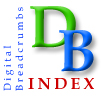
| Search |
 |
||||||||
| Words | Images | Audio | Scholar | ||||||||
|
||||||||
|
Although we plan to expand our research to gather more in-depth information about the specific practices used by our participants, as well as to engage them in focus groups where they discuss and interrogate their practices, we feel that the preliminary data we have gathered so far points to a clear need for academic libraries to acknowledge their location as (relatively) smaller resources within a larger framework of knowledge spaces. This need is made all the more urgent by the fact that users have already made this shift. As a result, libraries must (and many are already doing so) consider how to incorporate outside resources into their data-management practices. Academic libraries such as Harvard, Stanford, and Oxford, for example, have developed partnerships with Google, which has recently added to its database the holdings of these major academic libraries (Markoff & Wyatt, 2004). Other libraries could follow suit, initiating partnerships with Google or other search engines. Google also now offers Google Scholar (http://scholar.google.com/), a service that searches for sources deemed to be appropriate for scholarly audiences. Libraries might take advantage of this resource or, better yet, offer input into shaping it to return the kinds of sources librarians would be willing to reference, so they are not "horrified" to find researchers consulting an outside search service. Teacher-researchers could similarly provide feedback about the kinds of online sources they would be confident consulting and would be comfortable having their students consult. Our purpose here is not necessarily to promote Google specifically, but to point to how libraries might respond to student researchers' already prevalent use of Google. Additionally, academic libraries could consider implementing both visual and information design features of these commercial web sites that could potentially be of use to scholars in academic settings. The visual space of Google was particularly important to Katie, who explicitly presented Google as a model for how search interfaces should look. She explained, "you go to Google and it's more creative text, and sometimes they'll have pictures, and it's more of a friendly [service than the USF library]." Mark concurred. He said, "I guess it would be nice if the database in the library was a little bit more . . . [long pause] . . . I don't know, I little more, I guess, like Google? I mean, it would be nice, if you could punch in a term into the library database and say, 'I wanna look for this,' and it would scan all of the abstracts of all of the books to find that term anywhere." He elaborates in the sound file below. (For a full transcript of this interview, see the Words link or download the pdf transcript here.)
For him, a service's ability to search full text makes it more attractive. For understandably practical reasons, libraries generally do not offer this service. Given the volume of books at even a small research library, it would take a significant investment of labor and time to provide full text searches. But the fact that other search services already do so could relieve libraries of this burden, if they work to form partnerships with these outside services. |